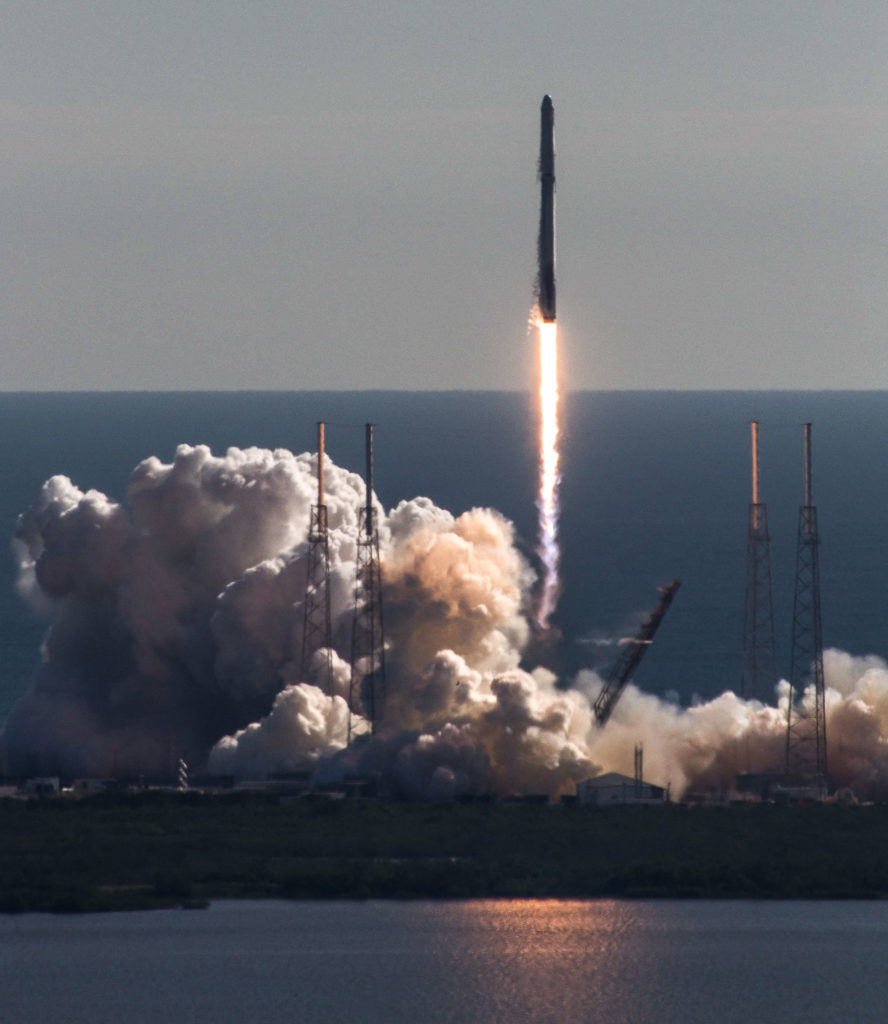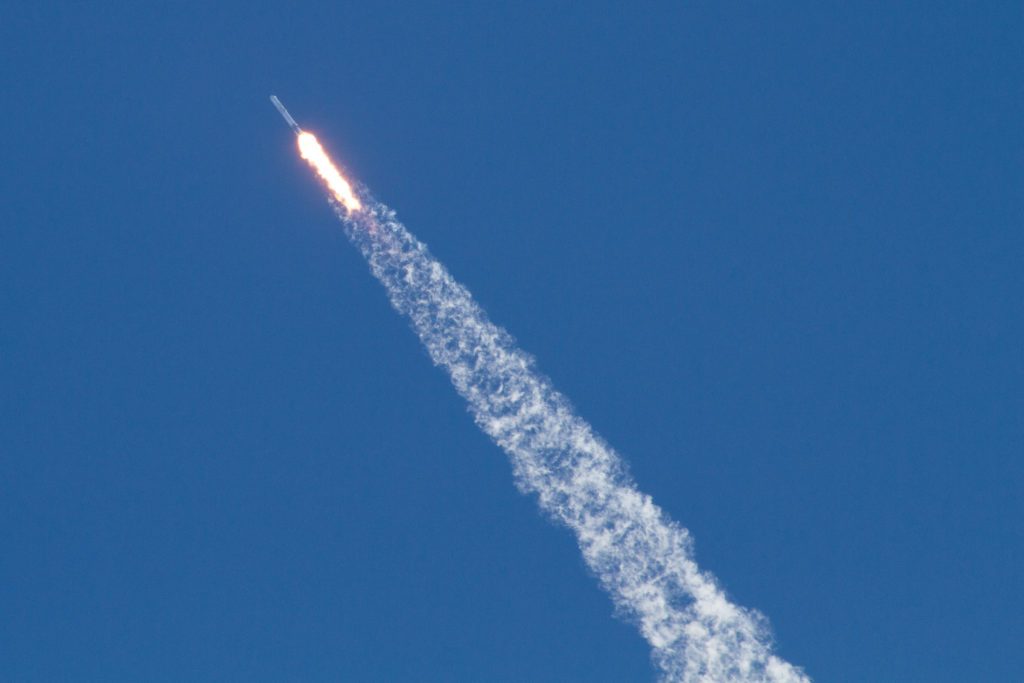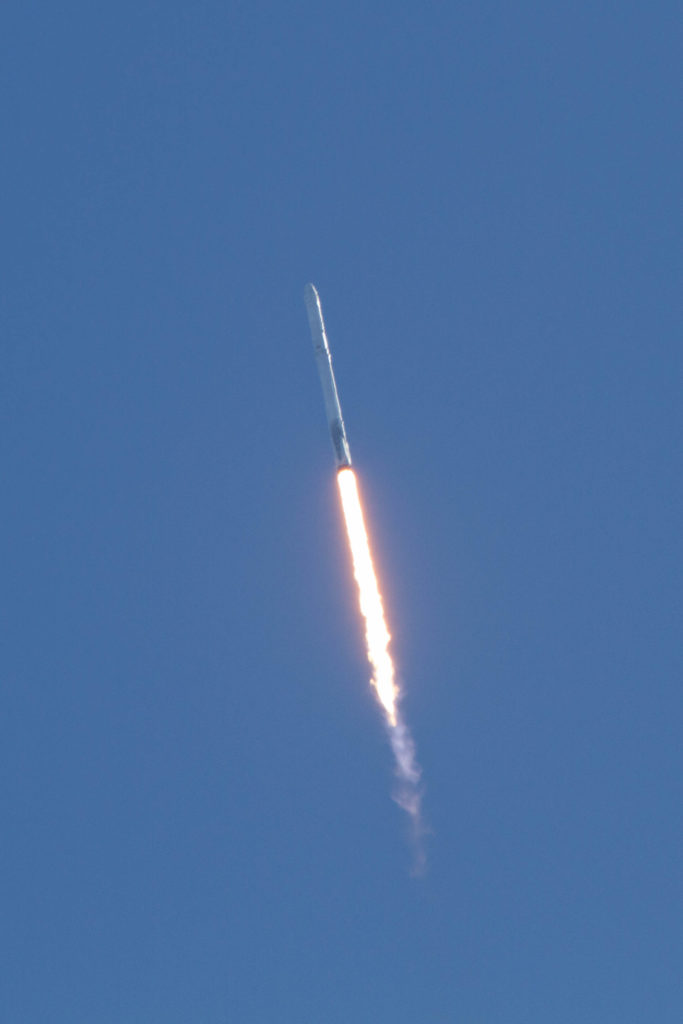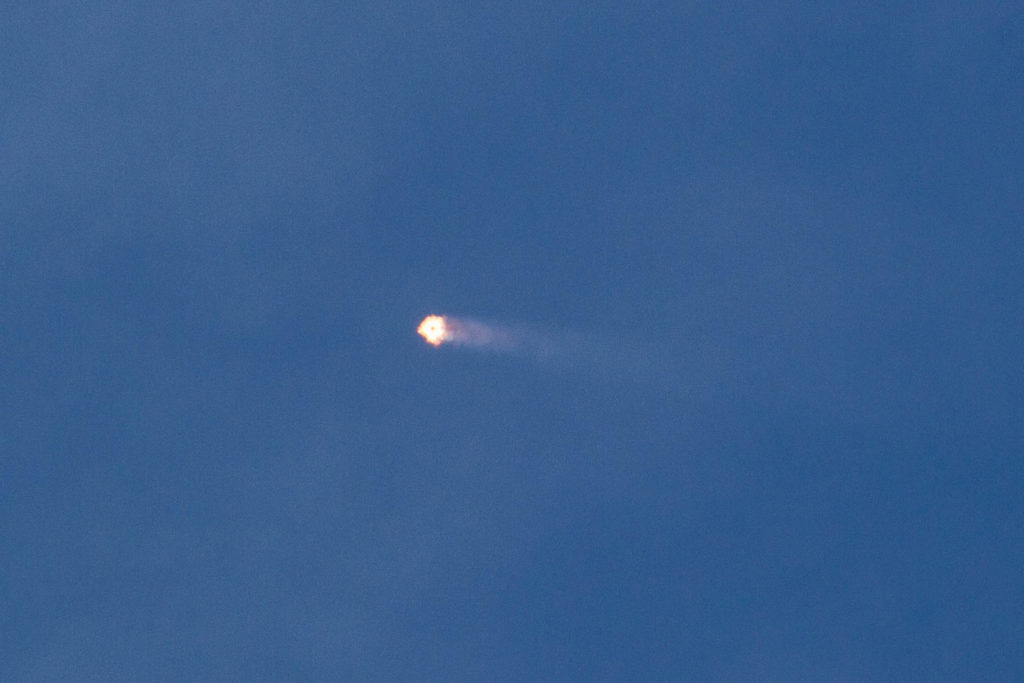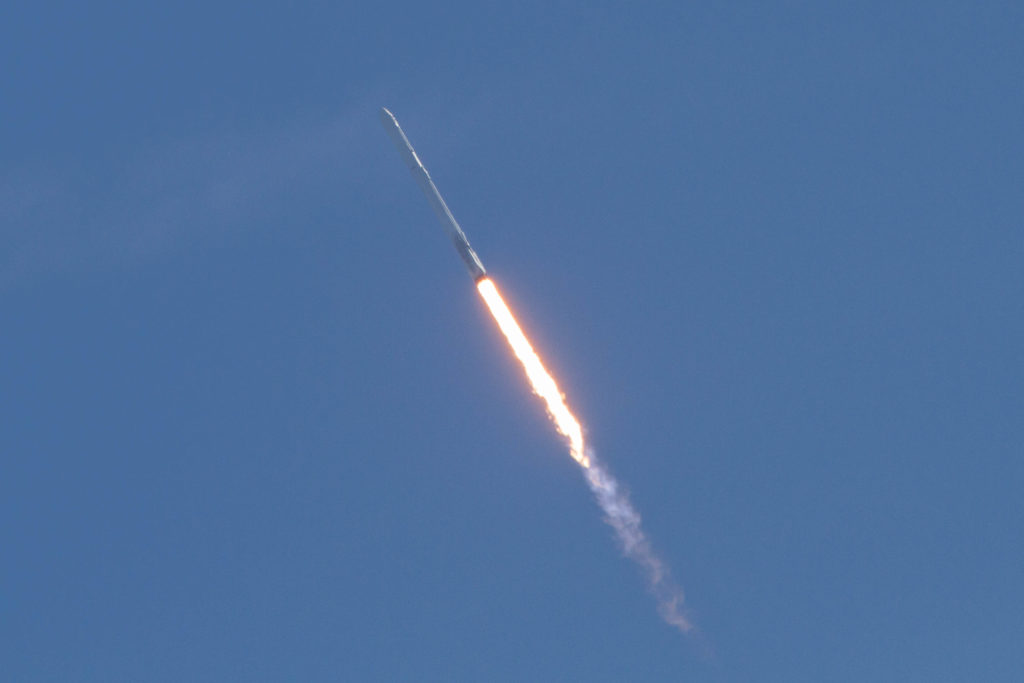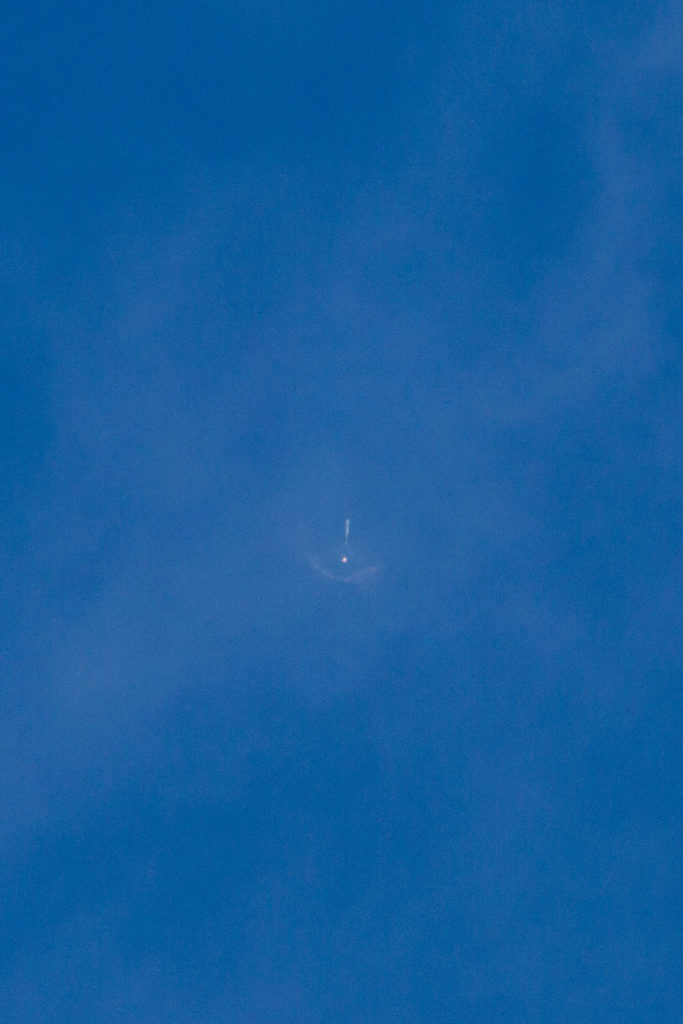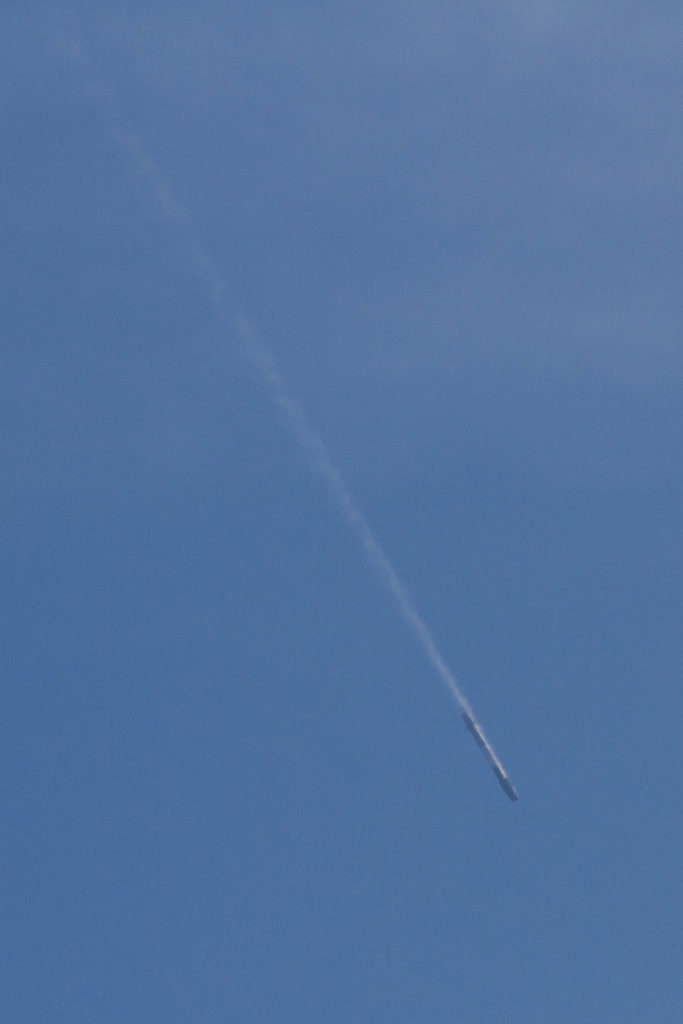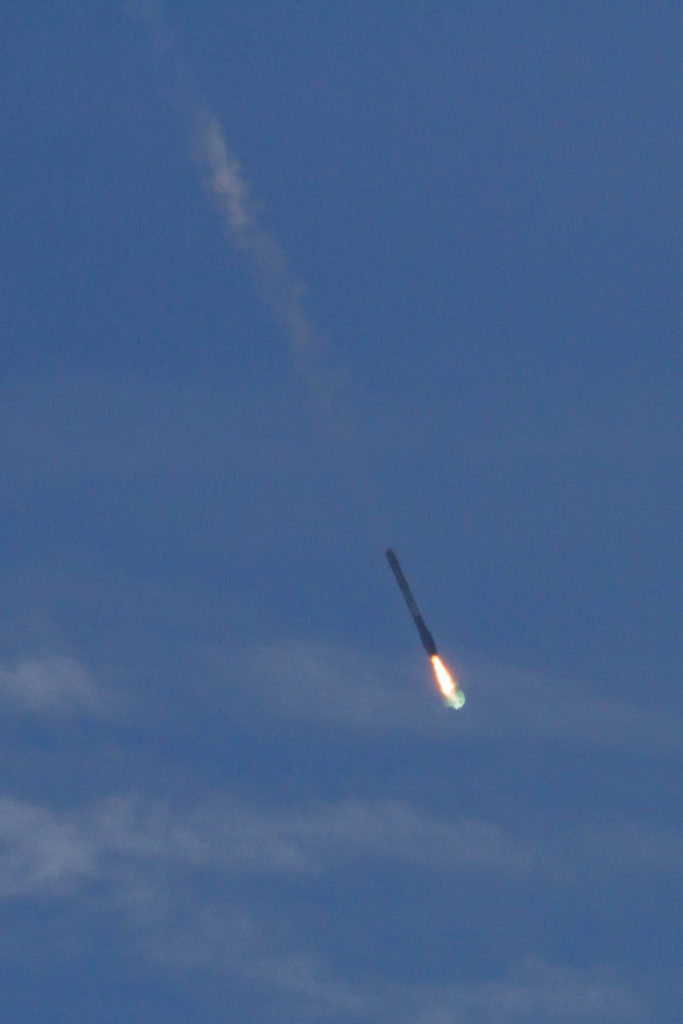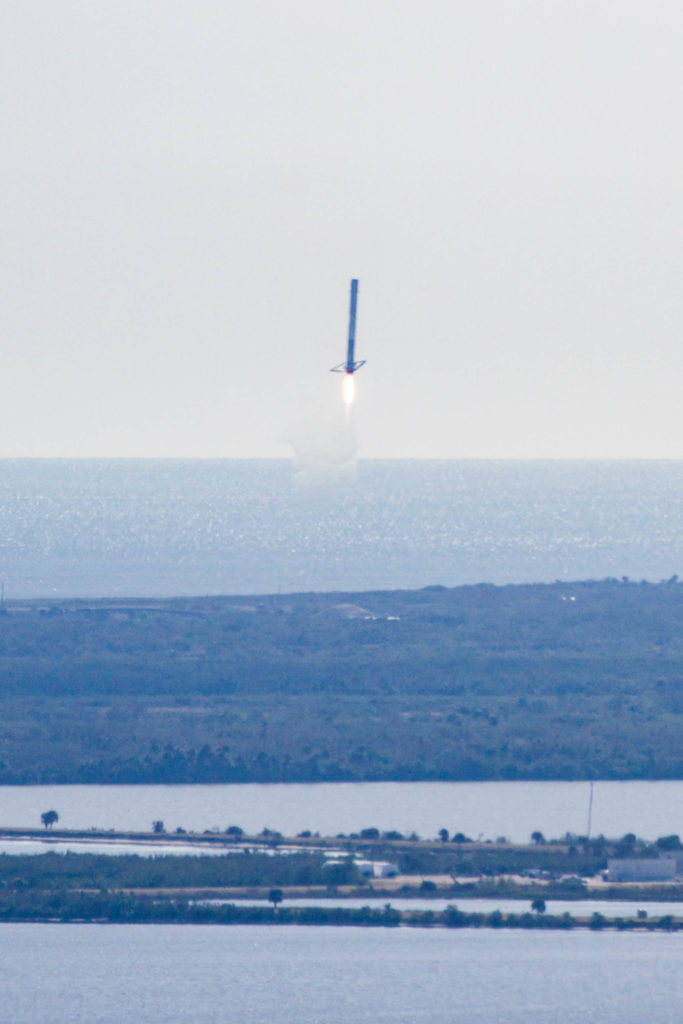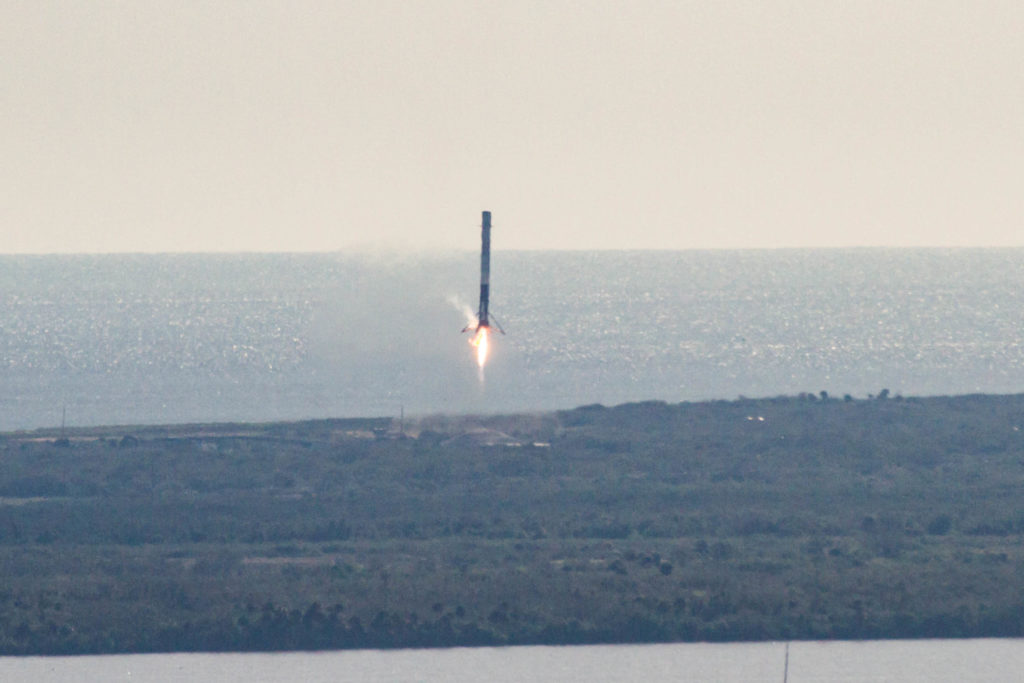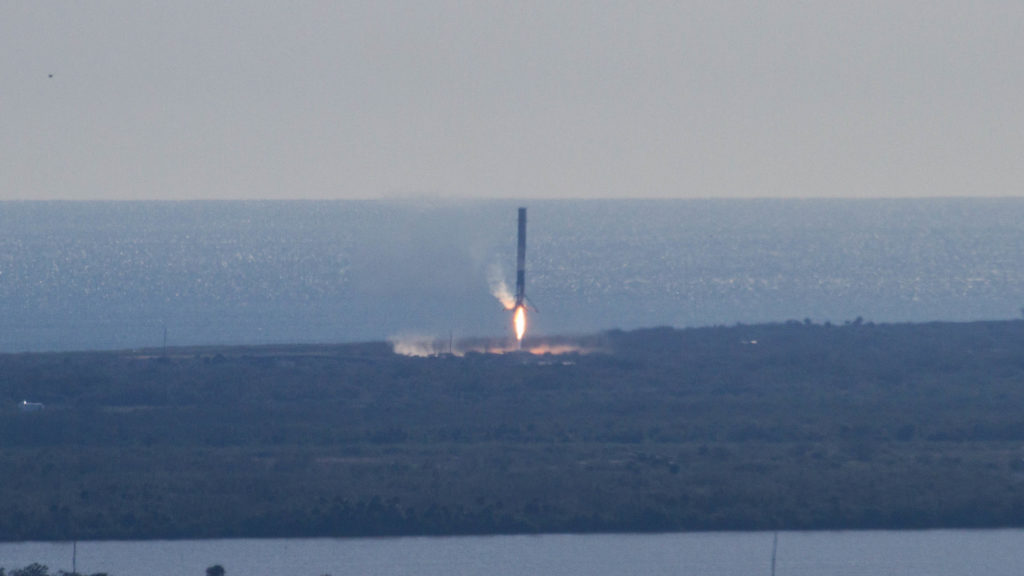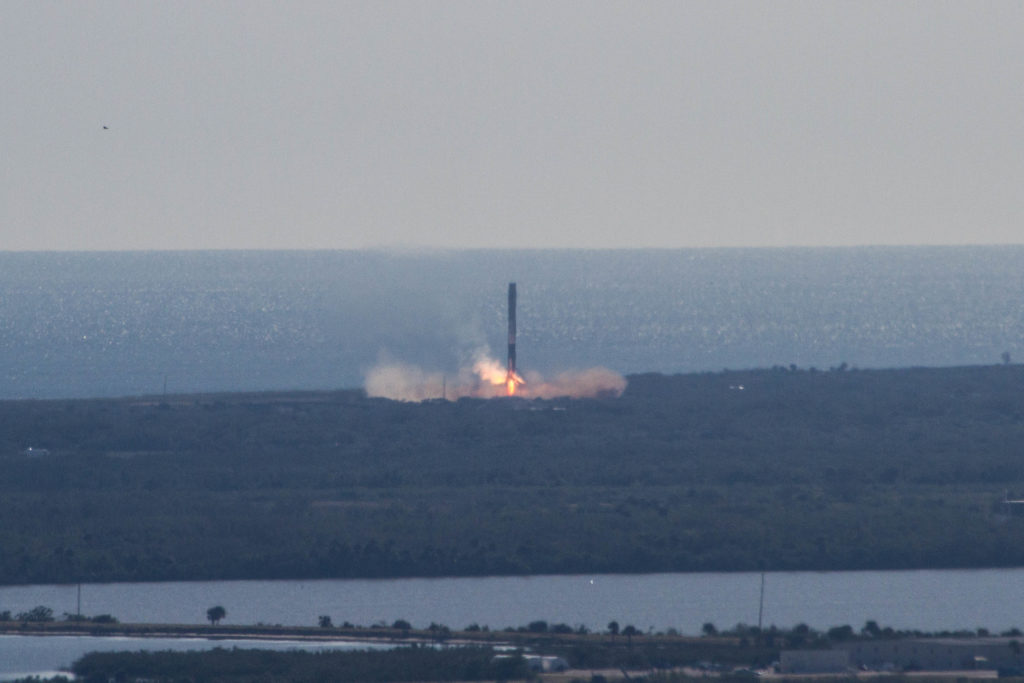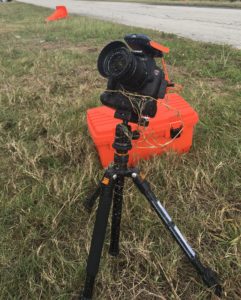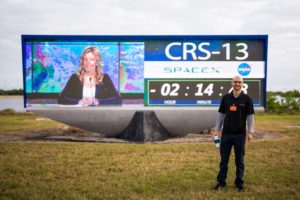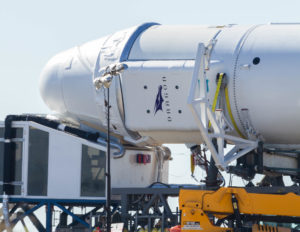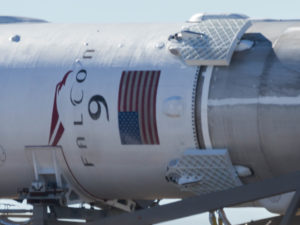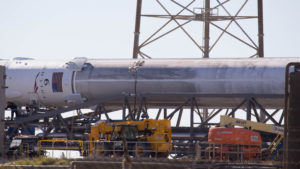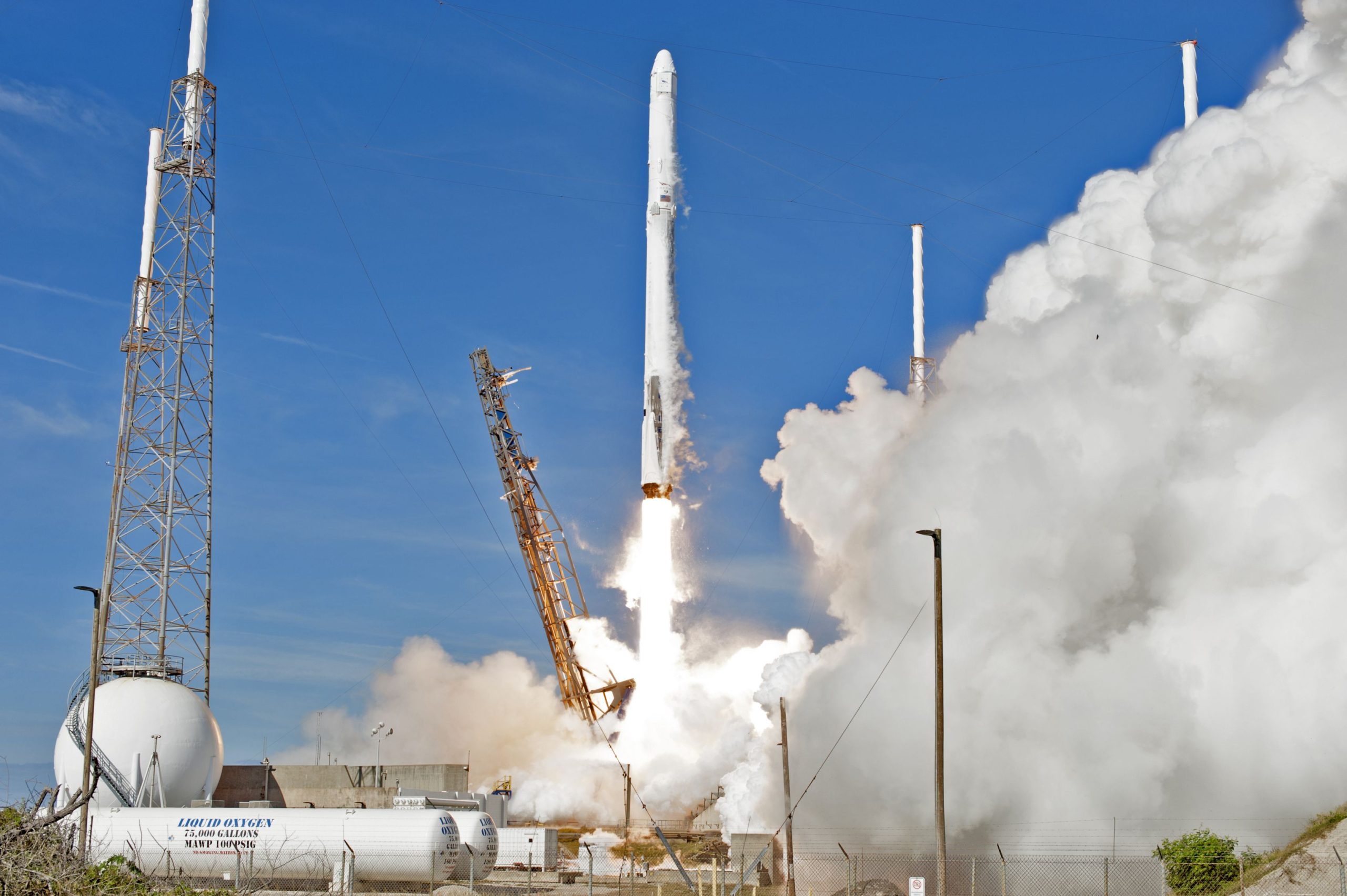
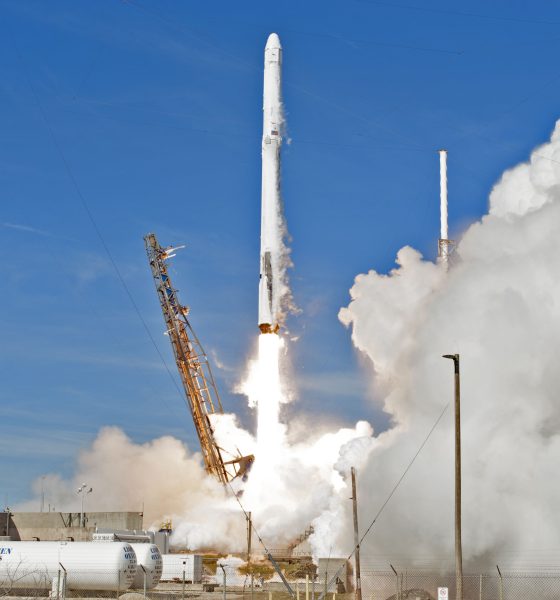
News
A flight-proven SpaceX launch and landing, in pictures
After a series of frustrating but predictable delays, SpaceX has returned its newly-refurbished Launch Complex 40 to active duty with the successful launch of a reused Falcon 9 booster, itself carrying a refurbished Cargo Dragon spacecraft now headed to the International Space Station for its second time.
Clear, sapphire skies greeted Falcon 9 and Dragon earlier this morning as they were at last prepped for launch, this time a very brief window of opportunity on Friday morning. Impressively, despite the fact that LC-40 is essentially a new launch pad, its first launch attempt went off without a hitch – even the slightest delay would have scrubbed the launch of CRS-13 to late December. SpaceX has thus continued to demonstrate its ability to move incredibly quickly while still accomplishing the tasks at hand: the company effectively constructed and upgraded an entirely-new launch facility in less than ten months, a staggering achievement by any comparison.
For this launch, Teslarati’s photographer Tom Cross was on hand to document it, and he weathered the numerous delays and cancellations of launch opportunities and photo ops over the last week. Arguably, his patience paid off and we have some exceptional photos of CRS-13, SpaceX’s 17th successful launch of 2017 and 20th successful landing of a Falcon 9 overall. While we await the status of Tom’s remotely placed cameras, tragically destroyed by Falcon 9’s intense exhaust, Tom was still present on top of the massive Vehicle Assembly Building and was able to take a number of amazing photos of the launch.
- A reused Falcon 9 clears the lightning towers of Florida’s Launch Complex-40 (LC-40). (Tom Cross)
- As Falcon 9 rises out of Earth’s atmosphere, its exhaust expands. (Tom Cross)
- Falcon 9 races to orbit. (Tom Cross)
- Falcon 9 nears main engine cutoff (MECO) and stage separation. (Tom Cross)
- As the rocket gains speed, it tips over to reach orbital velocity. (Tom Cross)
After Falcon 9’s second stage separated and continued on towards orbit with Dragon, booster 1035 immediately flipped around and headed back towards Cape Canaveral and Landing Zone-1 for its second-ever recovery. Stationed on top of the VAB, Tom captured this event all the way from boostback burn to landing.
- Booster 1035 completes its first boostback burn on the fringes of Earth’s atmosphere. (Tom Cross)
- After the first burn completes, Falcon 9 barrels through hypersonic and transonic regimes of flight. (Tom Cross)
- The final burn begins. (Tom Cross)
With the first boostback burn complete, Falcon 9 is placed on a landing trajectory. Finally, 1035 begins its last landing burn, the booster’s legs deploy, and as SpaceX would say, “Falcon 9 has landed.”
- Legs deploy…
- Falcon 9 approaches the pad…
- Almost there!
- And finally, Falcon 9’s Merlin 1D landing engine shuts off, completing the landing. (Tom Cross)
All things considered, this mission was an amazing success for SpaceX: not only does it symbolize NASA’s acceptance of SpaceX’s reuse procedures, but the launch is arguably the first time that a reused spacecraft has launched aboard the reused first stage of a rocket, a truly historic accomplishment for SpaceX along the path towards fully reusable access to orbit.
Up next on the busy rocket company’s docket is the fourth launch of Iridium satellites, currently scheduled to lift off just a week from today, December 22. Rather mind-bogglingly, Iridium-4 will also fly aboard a reused Falcon 9, this time the booster that launched the Iridium-2 mission in June 2017. In the meantime, SpaceX has announced the opening of media accreditation for Falcon Heavy’s January 2018 inaugural launch, which Tom Cross will no doubt be attending and photographing.
- RIP Tom’s cameras 🙁 (Tom Cross)
- Tom Cross at the Cape! (Brady Kenningston)
- A panorama of SpaceX’s newly-reactivated Launch Complex 40. Falcon 9 and Dragon can be seen in the center. (Tom Cross/Teslarati)
- A December 2017 panorama of SpaceX’s LC-40 facilities, CRS-13’s Cargo Dragon and Falcon 9. (Tom Cross/Teslarati)
- Falcon 9 readying for launch at LC-40. (Tom Cross)
- Sooty Falcon 9 1035 before its second flight with an also-reused Dragon payload, CRS-13. (Tom Cross/Teslarati)

News
Tesla Giga Berlin draws “red line” over IG Metall union’s 35-hour week demands
Factory manager André Thierig has drawn a “red line” against reducing Giga Berlin’s workweek to 35 hours, while highlighting that Tesla has actually increased its workers’ salaries more substantially than other carmakers in the country.

Tesla Giga Berlin has found itself in a new labor dispute in Germany, where union IG Metall is pushing for adoption of a collective agreement to boost wages and implement changes, such as a 35-hour workweek.
In a comment, Giga Berlin manager André Thierig drew a “red line” against reducing Giga Berlin’s workweek to 35 hours, while highlighting that Tesla has actually increased its workers’ salaries more substantially than other carmakers in the country.
Tesla factory manager’s “red line”
Tesla Germany is expected to hold a works council election in 2026, which André Thierig considers very important. As per the Giga Berlin plant manager, Giga Berlin’s plant expansion plans might be put on hold if the election favors the union. He also spoke against some of the changes that IG Metall is seeking to implement in the factory, like a 35-hour week, as noted in an rbb24 report.
“The discussion about a 35-hour week is a red line for me. We will not cross it,” Theirig said.
“(The election) will determine whether we can continue our successful path in the future in an independent, flexible, and unbureaucratic manner. Personally, I cannot imagine that the decision-makers in the USA will continue to push ahead with the factory expansion if the election results favor IG Metall.”
Giga Berlin’s wage increase
IG Metall district manager Jan Otto told the German news agency DPA that without a collective agreement, Tesla’s wages remain significantly below levels at other German car factories. He noted the company excuses this by referencing its lowest pay grade, but added: “The two lowest pay grades are not even used in car factories.”
In response, Tesla noted that it has raised the wages of Gigafactory Berlin’s workers more than their German competitors. Thierig noted that with a collective agreement, Giga Berlin’s workers would have seen a 2% wage increase this year. But thanks to Tesla not being unionized, Gigafactory Berlin workers were able to receive a 4% increase, as noted in a CarUp report.
“There was a wage increase of 2% this year in the current collective agreement. Because we are in a different economic situation than the industry as a whole, we were able to double the wages – by 4%. Since production started, this corresponds to a wage increase of more than 25% in less than four years,” Thierig stated.
News
Tesla is seeing a lot of momentum from young Koreans in their 20s-30s: report
From January to November, young buyers purchased over 21,000 Teslas, putting it far ahead of fellow imported rivals like BMW and Mercedes-Benz.

Tesla has captured the hearts of South Korea’s 20s-30s demographic, emerging as the group’s top-selling imported car brand in 2025. From January to November, young buyers purchased over 21,000 Teslas, putting it far ahead of fellow imported rivals like BMW and Mercedes-Benz.
Industry experts cited by The Economist attributed this “Tesla frenzy” to fandom culture, where buyers prioritize the brand over traditional car attributes, similar to snapping up the latest iPhone.
Model Y dominates among young buyers
Data from the Korea Imported Automobile Association showed that Tesla sold 21,757 vehicles to the 20s-30s demographic through November, compared to BMW’s 13,666 and Mercedes-Benz’s 6,983. The Model Y led the list overwhelmingly, with variants like the standard and Long Range models topping purchases for both young men and women.
Young men bought around 16,000 Teslas, mostly Model Y (over 15,000 units), followed by Model 3. Young women followed a similar pattern, favoring Model Y (3,888 units) and Model 3 (1,083 units). The Cybertruck saw minimal sales in this group.
The Model Y’s appeal lies in its family-friendly SUV design, 400-500 km range, quick acceleration, and spacious cargo, which is ideal for commuting and leisure. The Model 3, on the other hand, serves as an accessible entry point with lower pricing, which is valuable considering the country’s EV subsidies.
The Tesla boom
Experts described Tesla’s popularity as “fandom culture,” where young buyers embrace the brand despite criticisms from skeptics. Professor Lee Ho-geun called Tesla a “typical early adopter brand,” comparing purchases to iPhones.
Professor Kim Pil-soo noted that young people view Tesla more as a gadget than a car, and they are likely drawn by marketing, subsidies, and perceived value. They also tend to overlook news of numerous recalls, which are mostly over-the-air software updates, and controversies tied to the company.
Tesla’s position as Korea’s top import for 2025 seems secured. As noted by the publication, Tesla’s December sales figures have not been reported yet, but market analysts have suggested that Tesla has all but secured the top spot among the country’s imported cars this year.
News
Tesla FSD fleet is nearing 7 billion total miles, including 2.5 billion city miles
As can be seen on Tesla’s official FSD webpage, vehicles equipped with the system have now navigated over 6.99 billion miles.

Tesla’s Full Self-Driving (Supervised) fleet is closing in on almost 7 billion total miles driven, as per data posted by the company on its official FSD webpage.
These figures hint at the massive scale of data fueling Tesla’s rapid FSD improvements, which have been quite notable as of late.
FSD mileage milestones
As can be seen on Tesla’s official FSD webpage, vehicles equipped with the system have now navigated over 6.99 billion miles. Tesla owner and avid FSD tester Whole Mars Catalog also shared a screenshot indicating that from the nearly 7 billion miles traveled by the FSD fleet, more than 2.5 billion miles were driven inside cities.
City miles are particularly valuable for complex urban scenarios like unprotected turns, pedestrian interactions, and traffic lights. This is also the difference-maker for FSD, as only complex solutions, such as Waymo’s self-driving taxis, operate similarly on inner-city streets. And even then, incidents such as the San Francisco blackouts have proven challenging for sensor-rich vehicles like Waymos.
Tesla’s data edge
Tesla has a number of advantages in the autonomous vehicle sector, one of which is the size of its fleet and the number of vehicles training FSD on real-world roads. Tesla’s nearly 7 billion FSD miles then allow the company to roll out updates that make its vehicles behave like they are being driven by experienced drivers, even if they are operating on their own.
So notable are Tesla’s improvements to FSD that NVIDIA Director of Robotics Jim Fan, after experiencing FSD v14, noted that the system is the first AI that passes what he described as a “Physical Turing Test.”
“Despite knowing exactly how robot learning works, I still find it magical watching the steering wheel turn by itself. First it feels surreal, next it becomes routine. Then, like the smartphone, taking it away actively hurts. This is how humanity gets rewired and glued to god-like technologies,” Fan wrote in a post on X.
